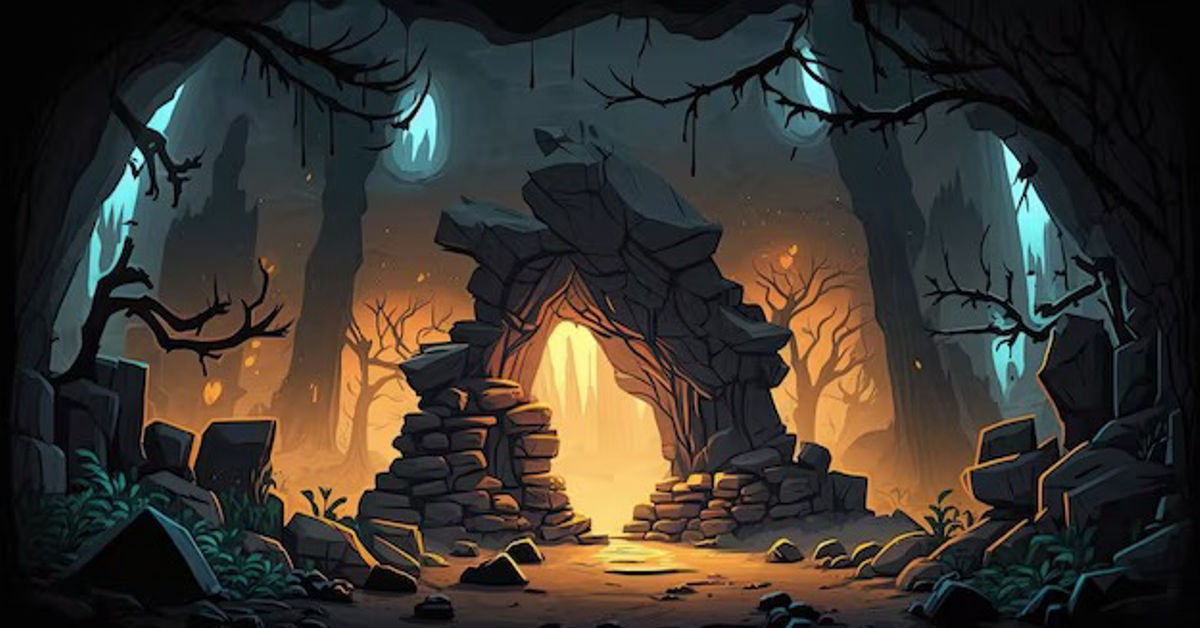When opening the Tomb of Annihilation campaign for the first time, players and Dungeon Masters are met with something unexpected—an unmissable disclaimer. It reads:
“The following adventure contains themes of death and exploration in a deadly jungle setting. It is intended for mature audiences and should be played with care and respect for sensitive topics.”
This disclaimer is not just a legal buffer; it is an invitation, a warning, and a guiding principle for how this campaign should be approached. In an era where tabletop roleplaying games have transcended basements and hobby shops to become inclusive, narrative-rich experiences for diverse global audiences, the Tomb of Annihilation disclaimer serves a critical role in setting expectations.
This article dives deep into the meaning and implications of this disclaimer, why it exists, what it signals to players, and how it represents a broader shift in the cultural, narrative, and community landscape of Dungeons & Dragons. We’ll explore the background of the module, the controversies around its content, and how Wizards of the Coast (the publisher) has responded to feedback through disclaimers like this one.
A Brief Overview of Tomb of Annihilation
Published in 2017 by Wizards of the Coast, Tomb of Annihilation is a campaign module for Dungeons & Dragons 5th Edition (D&D 5e). The story unfolds in the deadly jungles of Chult, a once-forgotten land filled with ancient ruins, exotic cultures, and powerful curses. Players must venture deep into this perilous wilderness to stop a death curse affecting the world.
Unlike traditional fantasy settings, Tomb of Annihilation borrows heavily from real-world tropical geographies and themes of colonial exploration. The danger is omnipresent: disease, death traps, deadly creatures, and moral ambiguity make it one of the most lethal campaigns in D&D 5e.
This is precisely why the disclaimer was added.
Why Does Tomb of Annihilation Have a Disclaimer?
1. Player Safety and Emotional Preparedness
Dungeons & Dragons is, at its core, a collaborative storytelling experience. When a campaign involves dark themes—such as death, terminal illness, and loss—it can be emotionally taxing. The disclaimer helps establish that this module is not a light-hearted dungeon crawl. It carries weight, mood, and thematic maturity.
Players are advised to engage in a “Session Zero” before starting the game—a meeting where boundaries, expectations, and consent are discussed. The disclaimer acts as an official nudge to initiate that conversation.
2. Acknowledging Culturally Sensitive Content
Tomb of Annihilation has faced criticism for its portrayal of Chult, which some argue leans on colonialist tropes and exoticizes non-European cultures. By issuing a disclaimer, Wizards of the Coast acknowledges that parts of the adventure may be problematic or outdated in their portrayal of race, culture, and geography.
It is not an apology per se, but a recognition that the content may need to be adapted or approached with care depending on the group playing.
3. Shifting Industry Norms
Over the past decade, D&D has undergone a metamorphosis. The game that was once considered niche is now a global cultural force. With this rise has come a responsibility to address the inclusivity and representation within its stories.
Disclaimers in modules like Tomb of Annihilation, Curse of Strahd, and Out of the Abyss mark a broader editorial shift—Wizards of the Coast is actively trying to create safer, more inclusive environments for players of all backgrounds.
The Tone and Language of the Disclaimer
There is something deliberate in the tone of the Tomb of Annihilation disclaimer. It is neither heavy-handed nor dismissive. Instead, it strikes a balance between warning and invitation.
The use of the phrase “mature audiences” does not imply age alone; it gestures toward emotional readiness. Similarly, “themes of death” are not spelled out graphically, but the inclusion of the word signals to players that serious themes will be explored.
This type of language is becoming more common in TTRPG products, where player agency and safety are central to the experience.
Exploring Chult: Cultural Setting and Sensitivities
The land of Chult, where the module takes place, is rich in detail. Dense jungles, long-lost cities, ancient curses—it’s a perfect setting for a high-stakes adventure. But it is also a setting that reflects certain problematic storytelling conventions.
Chult is often portrayed through an outsider’s lens, borrowing visual and narrative tropes from African and Mesoamerican cultures, filtered through a colonial gaze. Some critics have pointed out that the original versions of Chult reduce a continent-sized culture into a singular, homogenous “exotic” location.
The disclaimer serves as a gentle push for DMs to critically assess how they depict Chult. Are they relying on stereotypes? Are they erasing the agency and depth of the NPCs who live there? These are not just academic questions—they directly influence the player experience.
Player Experience: Why the Disclaimer Matters
Emotional Impact
Some players are not prepared for the kind of character deaths and moral dilemmas Tomb of Annihilation offers. The death curse storyline introduces irreversible consequences—once dead, characters stay dead, even powerful ones.
A disclaimer warns players that this is not a “standard” campaign. It is, in many ways, a survival horror story.
Group Dynamics
The disclaimer also plays a role in group cohesion. It prevents misunderstandings and mismatched expectations. If one player believes the campaign is a light jungle romp while another is anticipating horror and tension, the mismatch can derail the narrative and cause friction.
By placing the disclaimer up front, the module encourages groups to have an open discussion before diving in.
Publisher Responsibility: Why Wizards of the Coast Uses Disclaimers
The use of disclaimers across several products is part of Wizards of the Coast’s evolving strategy to address past and present missteps. Instead of rewriting or canceling entire books, the company has opted to use disclaimers to:
- Acknowledge problematic elements.
- Encourage DMs to customize content to suit their group.
- Signal their awareness of cultural and emotional sensitivities.
While some critics argue this is a minimal effort, others see it as a step toward accountability and inclusivity.
Comparing Disclaimers in Major D&D Modules
| Module Title | Type of Disclaimer | Themes Noted in Disclaimer | Publisher Intent |
| Tomb of Annihilation | Emotional & Cultural | Death, exploration, mature themes | Player safety and cultural awareness |
| Curse of Strahd | Gothic Horror Advisory | Horror, trauma, abuse, gothic violence | Sensitivity to dark narrative themes |
| Out of the Abyss | Psychological Warning | Madness, imprisonment, hallucinations | Emotional prep for extreme narrative arcs |
| Ghosts of Saltmarsh | Colonial & Piracy Themes | War, conquest, slavery references | Contextual awareness for sensitive content |
| Spelljammer: Adventures in Space | Racial Tropes Acknowledged | Outdated cultural depictions | Cultural accountability and transparency |
Evolving Expectations: Modern Gaming Culture and Consent
The concept of informed consent is now deeply embedded in modern tabletop gaming. Tools like the “X-card,” “Lines and Veils,” and “Consent in Gaming” checklists have become commonplace. Disclaimers in published modules function similarly on a meta-level.
They tell the DM: this module may require thoughtful adaptation. They tell the player: you are empowered to opt-in or out.
Rewriting the Narrative: How to Handle the Content Responsibly
A good DM knows that running Tomb of Annihilation “as written” is not always the best choice. The disclaimer is permission to customize. Here’s how to responsibly use the module while respecting its themes and players:
- Session Zero Discussion: Always start with a pre-campaign meeting. Review themes, content, and boundaries.
- Content Warnings: Be explicit about the risks—disease, death, body horror, etc.
- Culture Building: Reimagine Chult with real-world research. Avoid stereotypes. Give NPCs depth and motivation.
- Collaborative Play: Ask players for feedback as the campaign progresses.
- Skip or Adapt: Not every trap, NPC, or scene needs to be played out if it makes someone uncomfortable.
Final Thoughts: Why Disclaimers Are Here to Stay
The inclusion of disclaimers like the one in Tomb of Annihilation is not about censorship—it’s about awareness. As Dungeons & Dragons continues to expand across cultures, generations, and identities, the game must grow to meet its players where they are.
This disclaimer is not a warning against danger, but an invitation toward empathy, consideration, and intentional play. It asks each player and DM to be mindful of the experiences they craft together.
In many ways, Tomb of Annihilation reflects the dual edge of roleplaying: it can offer unparalleled excitement and rich storytelling, but it must be handled with care. The disclaimer ensures that no one enters unaware.
FAQs
1. What is the purpose of the Tomb of Annihilation disclaimer?
The disclaimer sets expectations for mature themes, including death and cultural sensitivity, helping players prepare emotionally and contextually.
2. Is the Tomb of Annihilation campaign offensive?
While not intentionally offensive, it contains elements—like depictions of Chult—that may rely on outdated cultural tropes, hence the need for careful DM handling.
3. Can I modify the content of the campaign to suit my group?
Absolutely. The disclaimer encourages DMs to adapt content to suit their group’s needs and boundaries.
4. Is the Tomb of Annihilation campaign suitable for new players?
It can be, but new players should be briefed on its difficulty and mature themes. A Session Zero is highly recommended.
5. Why are disclaimers becoming common in D&D products?
Disclaimers acknowledge sensitive themes and promote responsible storytelling, reflecting the game’s evolving focus on inclusivity and player safety.







